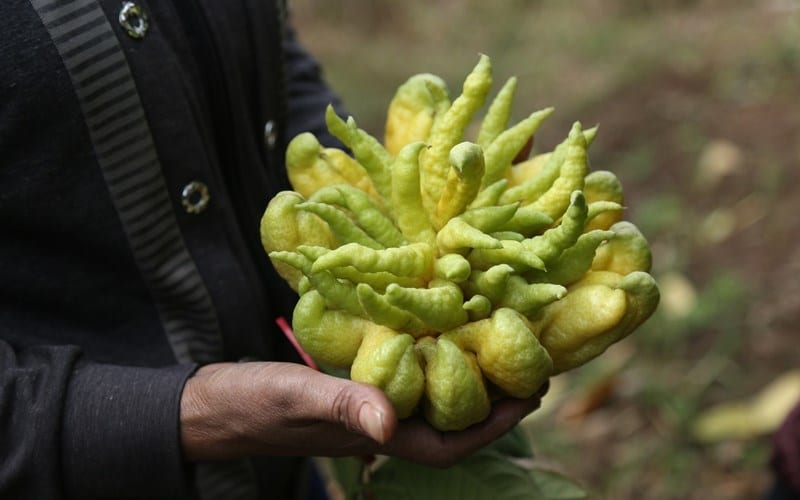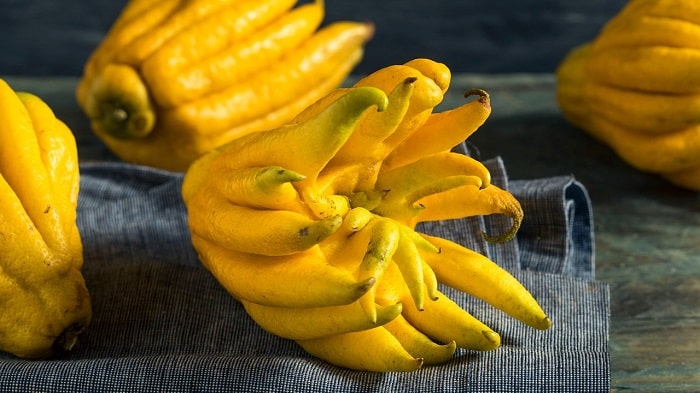The Unique and Bizarre Beauty Of The Buddha’s Hand

The Buddha’s Hand fruit, also known as Buddha’s Hand citron, is a remarkable citrus fruit that holds a special place in the world of botany and culinary delights. Its distinctive appearance, captivating fragrance, and rich cultural significance make it a truly unique and fascinating fruit.

1. Unparalleled Appearance:
The Buddha’s Hand fruit is instantly recognizable due to its striking appearance. Unlike conventional fruits, it possesses a finger-like shape, resembling a hand in a gesture of prayer or meditation. The fruit is segmented, with elongated, finger-like sections that can vary in number, ranging from five to twenty. Its bright yellow color adds to its allure, making it an exquisite natural wonder.
2. A Fragrance like No Other:
One of the most extraordinary aspects of the Buddha’s Hand fruit is its enchanting fragrance. When the fruit ripens, it emits a powerful and captivating aroma that fills the surrounding space. The scent is often described as a blend of floral and citrus notes with a hint of spice, resembling a harmonious combination of lemon, lavender, and jasmine. This unique fragrance makes it a popular choice for perfumes, aromatherapy, and culinary purposes.

3. Culinary Uses and Benefits:
While the Buddha’s Hand fruit is not typically consumed as a whole due to its lack of flesh and juice, its zest is highly valued in cooking and baking. The aromatic zest adds a burst of flavor and fragrance to various dishes and beverages. It is often used in marinades, desserts, sauces, and cocktails, providing a delightful and refreshing taste. Additionally, the Buddha’s Hand fruit is prized for its high concentration of essential oils, making it a sought-after ingredient in traditional medicines and herbal remedies.

4. Symbolism and Cultural Significance:
The Buddha’s Hand fruit holds deep symbolism and cultural significance in various Asian countries, particularly in Buddhism. Its unique shape is associated with gestures of good fortune, purity, and enlightenment. The fruit is often displayed in homes and temples as a symbol of auspiciousness and as an offering to deities and ancestors. It is believed to bring blessings, luck, and positive energy to those who possess it.

5. Horticultural Curiosity:
Beyond its aesthetic and cultural value, the Buddha’s Hand fruit also captivates horticulturists and plant enthusiasts. Its unusual form and growth patterns make it an intriguing specimen. The fruit can be grown as an ornamental plant, adding a touch of elegance to gardens and landscapes. Additionally, the tree’s hardiness and adaptability make it a suitable choice for cultivation in various climates.

The Buddha’s Hand fruit stands out as a botanical marvel, mesmerizing observers with its distinctive appearance, enchanting fragrance, and rich symbolism. From its use in culinary creations to its role in cultural rituals, this extraordinary fruit continues to captivate and inspire people across the globe. Whether admired for its beauty, enjoyed for its zest, or revered for its symbolic value, the Buddha’s Hand fruit remains an exceptional treasure, reminding us of nature’s boundless wonders.



